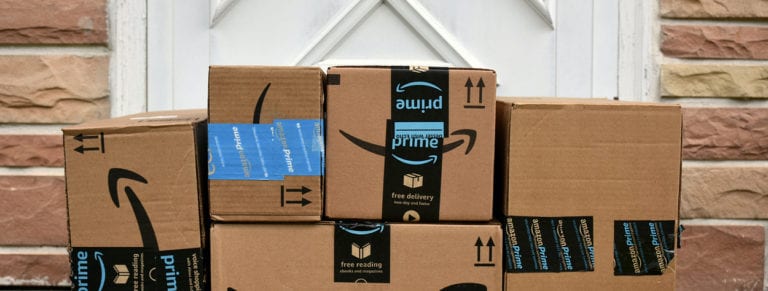In an age of both constant and rapid technological evolution, it’s becoming increasingly important for third-party sellers to keep their Amazon strategy in check, shifting emphasis to focus on trending topics that prove effective, and redistributing manpower wherever necessary to focus on the core aspects of their business.
To help us analyze the marketplace and its seller inhabitants, Feedvisor surveyed more than 1,200 Amazon merchants about their challenges, ventures, and strategies to maximize profitability. Feedvisor is acutely familiar with Amazon’s algorithm, and is harnessing billions of data points to enable sellers to drive marketplace success. This report is an extension of that relationship.
The results in the latest edition of the report, The State of the Amazon Marketplace 2018, take that connection with the seller community to the next level. The report provides sellers with an innovative, educational resource to benchmark their performance against their peers and discover how other sellers operate key functions of their business.
FBA versus FBM: Which Reigns?
The newest edition of the report discovered that greater profit potential exists with Fulfillment by Amazon versus Fulfillment by Merchant. Nearly one-third of sellers who sold at least 60% of their inventory via FBA saw a 21-30% profit margin, compared to 25% of sellers who sold more product on their own via FBM. For any profit margin above 11%, seller respondents that fulfill over 60% of their inventory via FBA always have higher profit margins than FBM sellers.
Seller Fulfilled Prime Stats
Additionally, the report reveals that one-third of all surveyed sellers are utilizing Seller Fulfilled Prime (SFP) in some form. The fulfillment method, which is rapidly gaining traction, allows qualified Amazon sellers with Professional seller accounts to display the Amazon Prime badge on orders fulfilled via their own warehouse or third-party logistics (3PL) providers.
Sellers have the ability to regionally designate where they would like to engage in SFP, allowing them to be Prime in the specific areas that make geographical sense for their business. This allows sellers to protect their margins and capitalize on cost-effectiveness via their own warehouse location.
According to Amazon, “Seller-fulfilled listings that became Prime-eligible for the first time through Seller Fulfilled Prime experienced an average sales uplift of more than 50%.”
We anticipate the SFP trend to increase over the next year, as more sellers realize they want more interaction with Prime customers, the loyal Amazon shoppers who are more than twice as likely to shop online daily than non-Prime customers.
Amazon Maintains the Lead
Although Amazon continues to expand their business to other sectors, such as Amazon Video and optimizing voice search via the Amazon Echo Dot, e-commerce very much remains a core facet of Amazon, both on a brand recognition basis and revenue basis. E-commerce is predicted to account for 17% of all U.S. retail sales by 2022, with Amazon leading the charge. The survey illustrated that nearly 50% of merchant respondents sell almost exclusively with Amazon, with revenue from the e-commerce giant accounting for 81-100% of their total sales.
Outside of Amazon, the top marketplaces that are used by Amazon sellers are eBay, sellers’ own websites, and Walmart. When comparing the 2018 survey results to those from last year, eBay has lost notable ground as a secondary marketplace. 52% of surveyed Amazon sellers are also selling on eBay in 2018, down from 65% in 2017. On the flip side, Walmart and Jet’s combined share has increased from 17% to 25%, confirming that the retail chain has doubled down on their commitment to e-commerce.
Home and Kitchen Is Top Product Category
Items that fall in the Home and Kitchen category on Amazon are the most popular products for sellers on the marketplace, with nearly one-fifth of them actively selling in that category. These products include bedding, bath, furniture, wall decor, cleaning supplies, and more.
The Health and Personal Care and Clothing and Accessories categories are tied for the second most popular product categories to sell, closely followed by the Books and Movies category, with nearly 9% of sellers engaging in each category.
The Private Label Trend
While Amazon doesn’t release its private label sales data, Business Insider reported in October 2017 that Amazon’s private label brands (they now have 70+ of them) could add $1B to its gross profit by 2019.
Online retailers and brands alike have noticed the trend and are responding by creating their own private label brands in order to have a stake in the game. Last year, 68% of seller respondents did not make any revenue with private label brands. This year, that number dropped to 44% of sellers, which indicates a 24% increase in sellers with private label brands. This is representative of the trend taking hold and making a mark on the e-commerce industry as a whole.
Sellers Have a Range of Business Goals for 2018
When sellers were asked about their expansion goals for 2018, the leading response (38% of surveyed sellers) was that they want to diversify to other platforms. Over one-fifth of them responded that they plan to use additional fulfillment methods. It’s important to understand your catalog in detail, so you can determine which fulfillment methods make the most sense for your business.
Uncover all of the relevant information for your business and more in The State of the Amazon Marketplace report. You will be able to pinpoint where you are aligned with other sellers, where you have room to improve, and the relevant steps to bridge any gaps.


